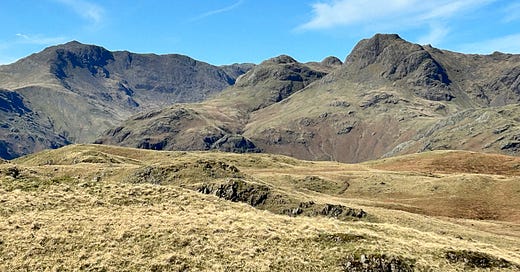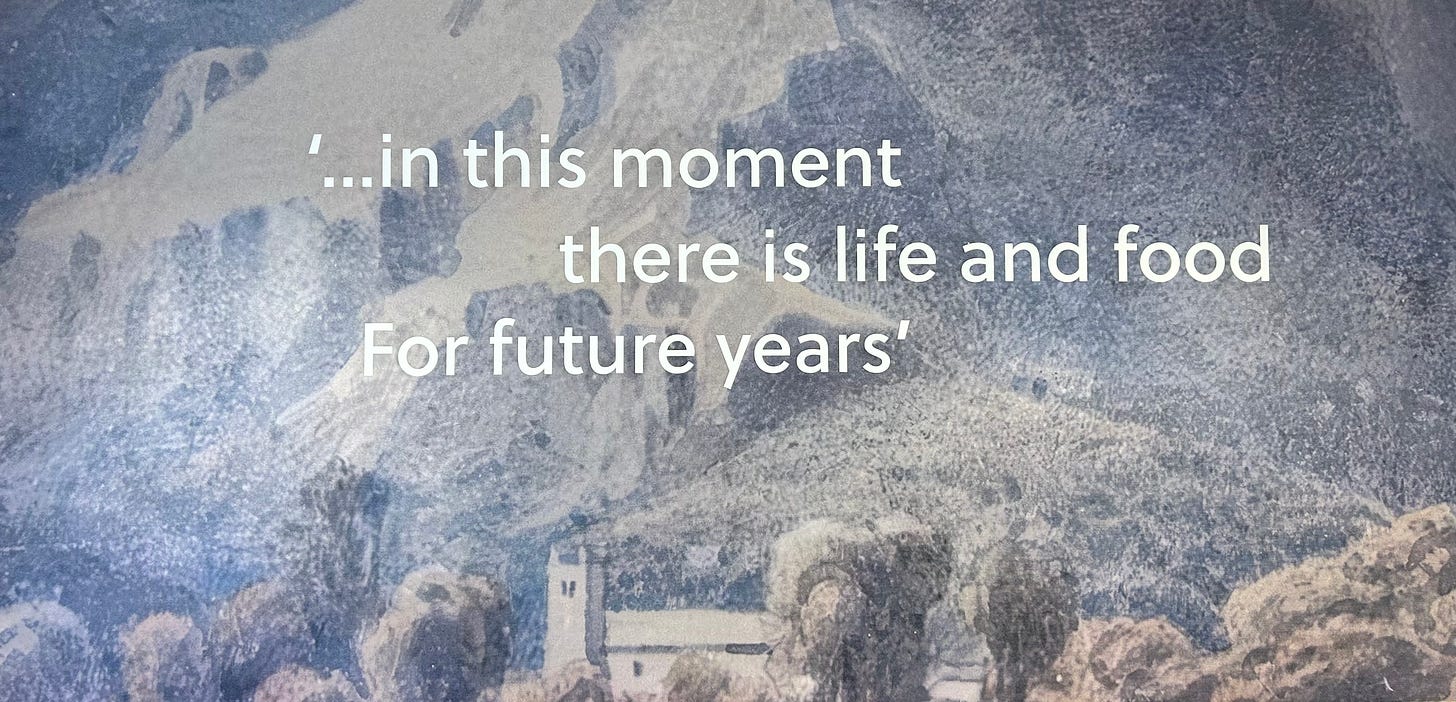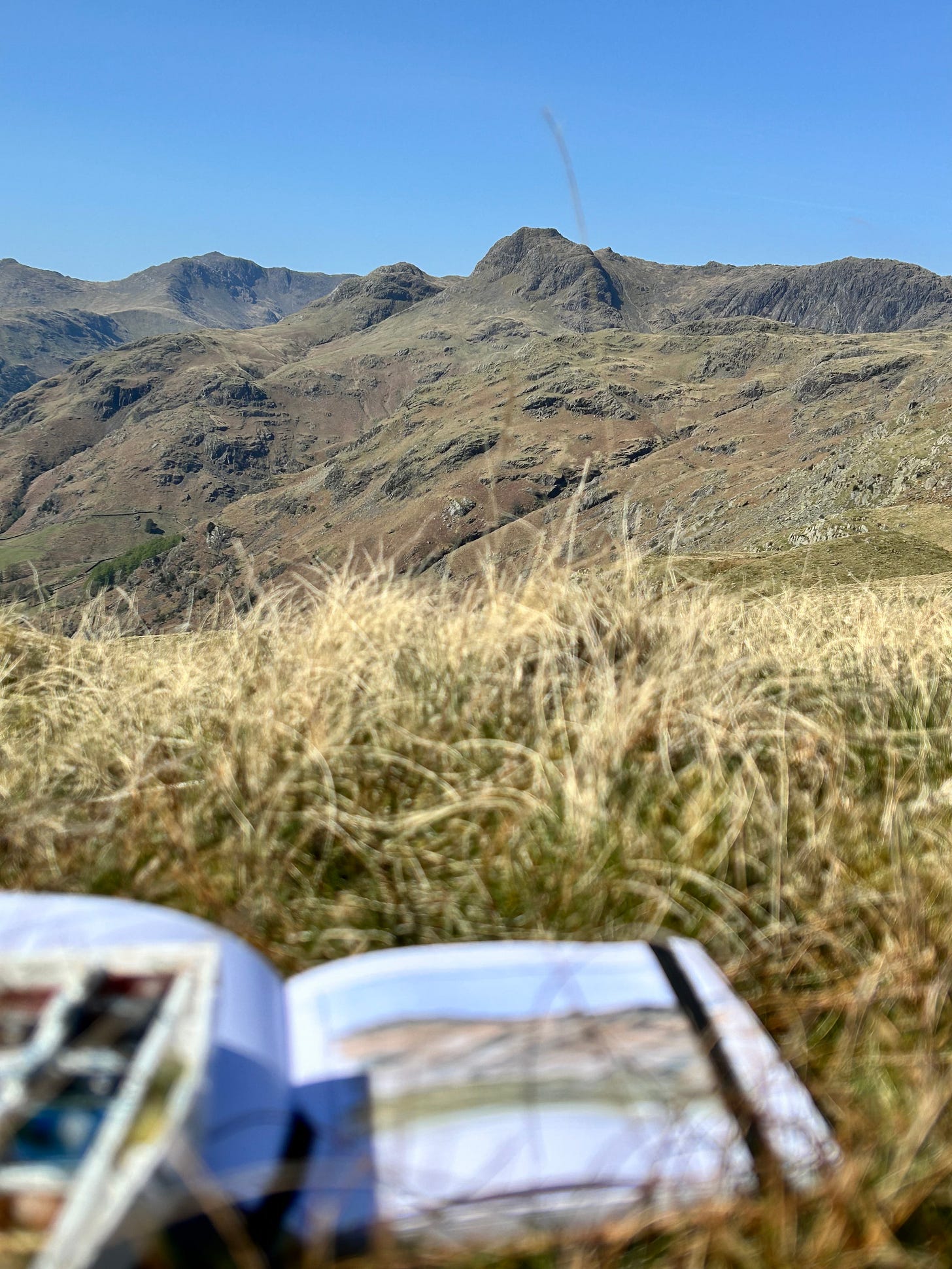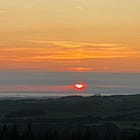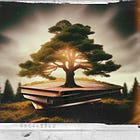Continuing a Wordsworth theme here on Substack (I Have Felt) …
I have taken to walking with a verse of Wordsworth in mind to reflect on, and inspired by Frank Skinner's poetry podcasts and his beautiful heartfelt reflections, attempt to dive deeper into words, meaning and structure. As I did recently, with Wordsworth's 'Spots of Time' extract from The Prelude.
“There are in our existence spots of time, That with distinct pre-eminence retain A renovating virtue, whence–depressed By false opinion and contentious thought, Or aught of heavier or more deadly weight, In trivial occupations, and the round Of ordinary intercourse–our minds Are nourished and invisibly repaired;”
Wordsworth’s “Spots of time”, are significant moments in nature of intense perception or experience with a transformative power that ‘retains’ a renovating virtue, such that we are ’nourished, and ‘invisibly repaired. They become embedded in memory and continue to provide nourishment and insight throughout life. As he writes in another Poem ‘Tintern Abbey’ moments in nature that provide “food for future years.”
It's nice to think this “spots of time” verse anticipates biophilia definition by nearly two centuries. When he writes about moments in nature that “retain a renovating virtue” that nourishes and repairs our minds, he’s describing what we now understand as the healing power of nature and biophilic design. His poetry consistently demonstrates how immersion in natural landscapes provides not just visual aesthetic pleasure but with full sense, psychological healing and spiritual renewal.
Lang Howe, Great Castle Howe, Blea Rigg, Silver Howe, Loughrigg … all evocative fell names well known to Wordsworth, and as Robert Macfarlane has commented ’fells that have been written over’ By sitting reflecting, sketching and writing on these fells somehow feels as a continuum from the past into the future
On the fells above Grasmere last week, with a warm crag to my back giving shelter from the wind, looking out on classic Lake District view that strikes me as being the kind of environment that both Wordsworth’s poetic insight and modern biophilia indicate as having restorative power. An expansive view, a balance of prospect and refuge, natural patterns, and the connection to geological time all engage biophilic responses.
When Wordsworth describes how natural scenes become “life and food for future years,” he’s articulating what biophilia research now knows: that even memories of natural experiences can trigger physiological and psychological benefits long after the exposure.
In both Wordsworth’s poetry and biophilia, nature isn’t just the backdrop for human activity but essential in our development and psychological health.
Do these musings excite, challenge or puzzle you? I’d love to know.
Starting my walks at the recently renovated Wordsworth Centre and café I found a lovely poem practice in place, on the theme of ‘weeds’ with customers invited to submit their own inspirations and thoughts on weeds intern inspired by Wordsworth. Over a coffee I shared my favourite line from Wordsworth “I have Felt”, a link to my substack post on that, and later a haiku. Connected.
Uplanned wild beauty Gentle natures persistence Gives worth in the unwanted
See earlier Regen Notes that reference Wordsworth

